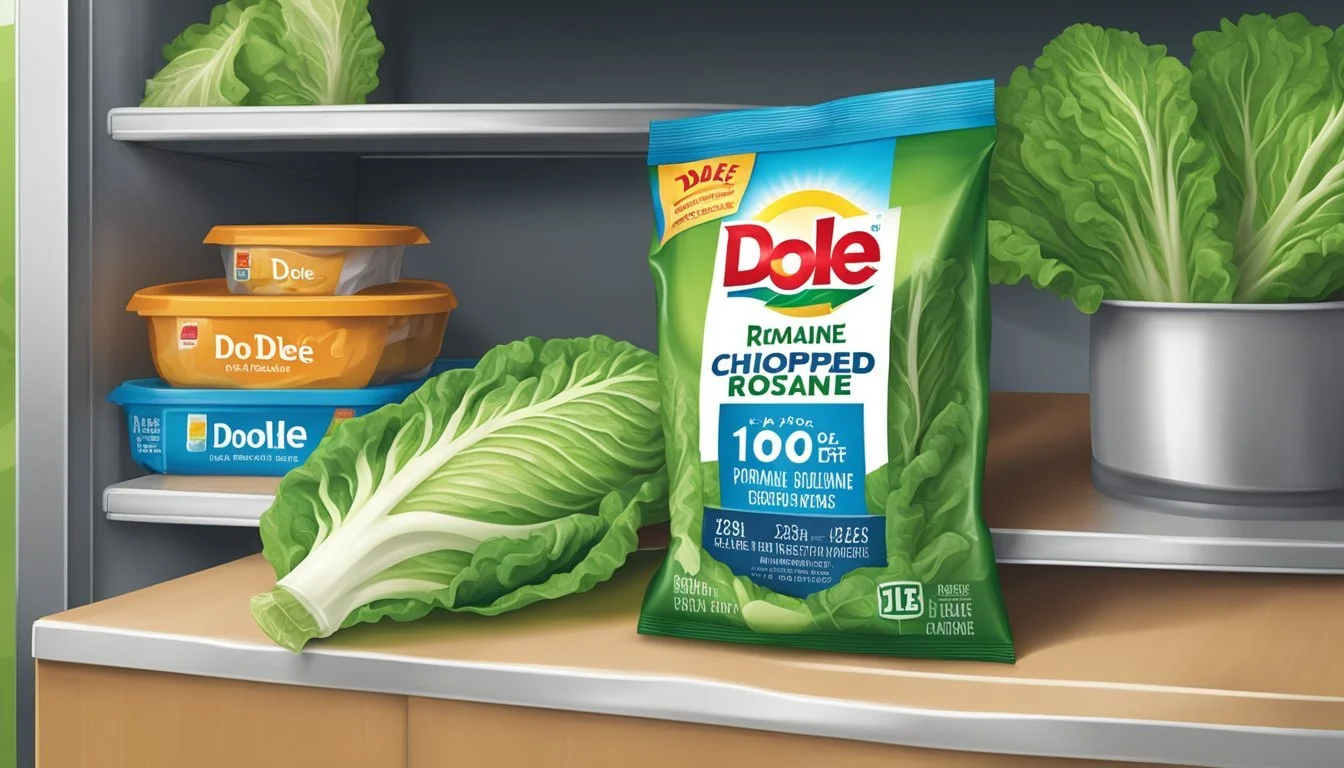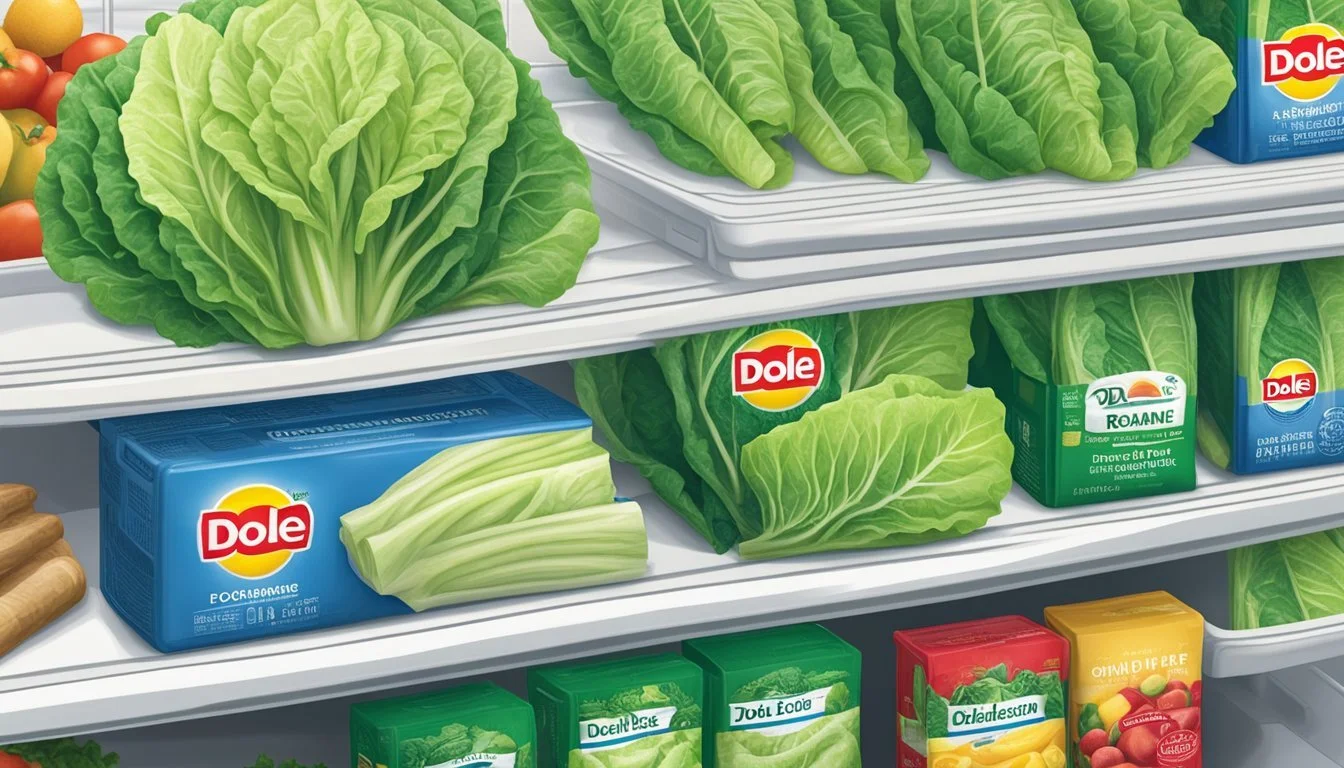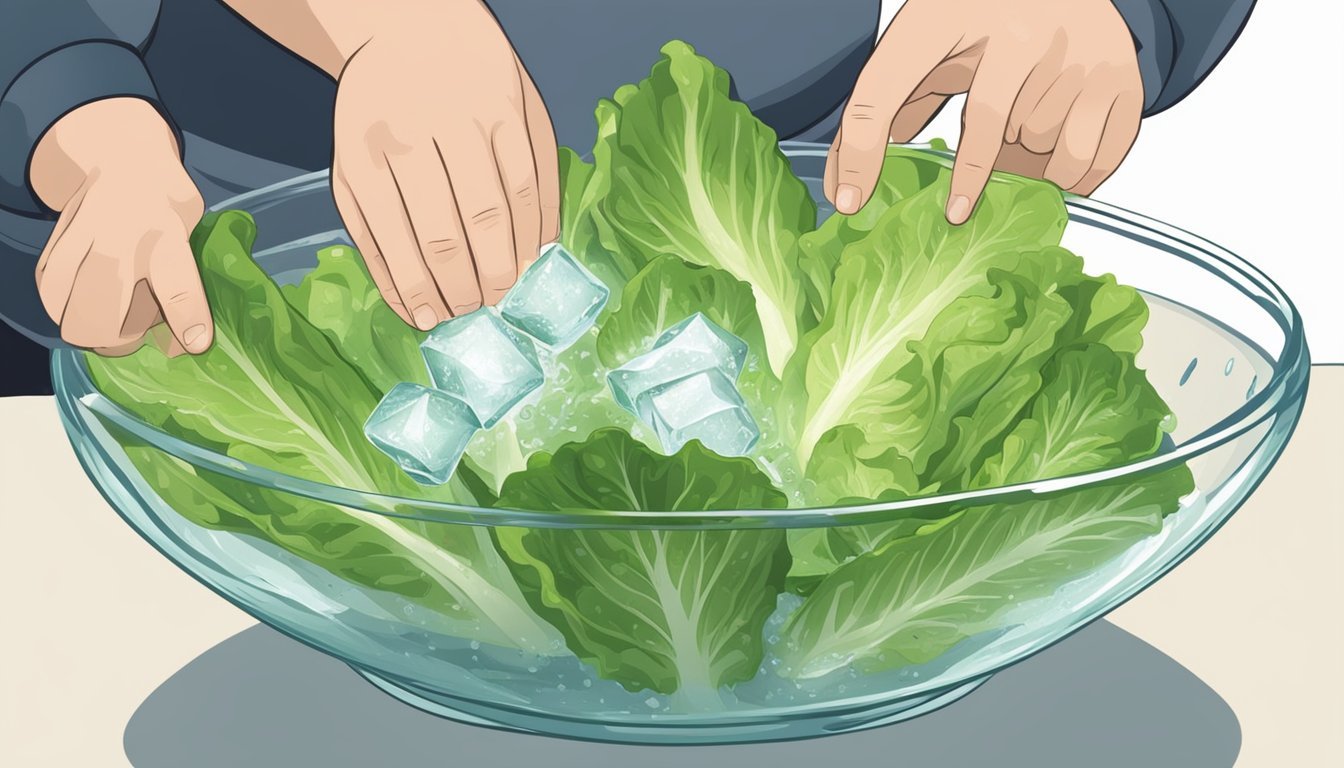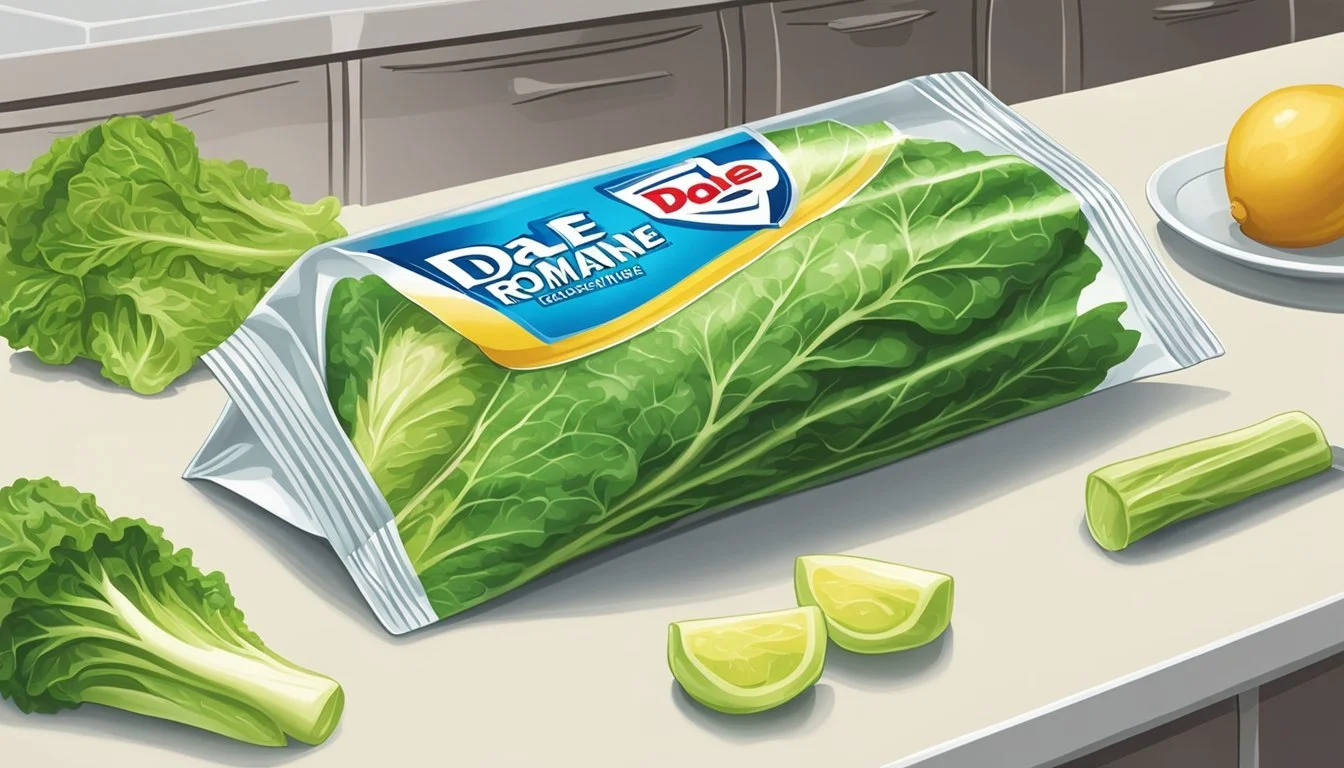How Long Does Dole Chopped Romaine Last?
Shelf Life and Storage Tips
Dole chopped romaine is a popular choice among those looking for a healthy and convenient option for salads and other dishes. This type of lettuce is known for its mild and slightly sweet flavor and is valued for its crunchy texture, making it a versatile ingredient in the kitchen. Like many fresh produce items, the shelf life of Dole chopped romaine is an important consideration for consumers wanting to maintain freshness and avoid waste.
When it comes to storage, keeping the lettuce refrigerated is key to preserving its crispness and extending its usability. To maximize the freshness of Dole chopped romaine, it is advisable to store it properly wrapped in the fridge, providing enough airflow to prevent excess moisture build-up which can lead to spoilage. The way romaine lettuce is packaged and stored can significantly affect its longevity, with special attention to the prevention of wilting and decay.
Understanding Romaine Lettuce
Romaine lettuce, known for its elongated heads and crisp, sweet leaves, is a common choice for both home cooks and restaurants. It is broadly utilized for its nutritional value, texture, and versatility in dishes.
Types and Characteristics
Romaine lettuce, or Lactuca sativa longifolia, presents itself in several varieties. They all share common traits such as a firm rib down their centers and loosely connected, elongated leaves. The signature variety has dark green outer leaves that lighten toward the center. Leaf texture ranges from crisp and sturdy in the outer leaves to more tender and sweet in the inner leaves, known as the "heart."
Whole head: The average shelf life of a whole head of romaine is roughly 10 to 20 days when stored properly in the refrigerator.
Romaine hearts: Typically, the hearts of romaine lettuce will last between 7 to 10 days.
Packaged romaine: Bagged chopped romaine lettuce, such as Dole's, can last as long as the whole heads when given room to breathe and stored correctly.
Romaine vs. Other Lettuces
Romaine lettuce stands apart from other types like iceberg, butter, and green leaf lettuce in several key areas. Compared to iceberg lettuce, romaine has a taller head and looser leaves, offering a more robust flavor and leafy texture. Moreover, it packs more nutritional value, including higher levels of vitamins A and K.
Iceberg lettuce: Typically lasts between 1 to 3 weeks and is known for its crispy texture but less nutritional content.
Butterhead lettuce (including Boston and Bibb types): Recognized for its small, round heads and tender texture, it generally keeps well for about 7 to 10 days.
Green leaf lettuce: Known for loose, wavy, green leaves with a mild taste, it has a similar shelf life to butterhead, lasting about 7 to 10 days.
Each lettuce type has distinct characteristics, but for lasting crispness and a slightly sweet flavor, romaine lettuce, especially when kept properly, is often the preferred choice.
Pre-Storage Preparation
Prior to storing Dole chopped romaine lettuce, one should ensure it is properly prepared to maintain freshness. The preparation involves two key steps: washing and drying, followed by chopping and tearing if necessary.
Washing and Drying
Wash: Even if prepackaged salads like Dole chopped romaine claim to be pre-washed, it's advisable to rinse the leaves to minimize potential bacterial contamination. Use cold water when washing the leaves.
Dry: After washing, drying the lettuce is crucial to prevent wilting and maintain crispness. Leaves should be gently patted dry with paper towels or a clean kitchen towel. Alternatively, using a salad spinner can efficiently remove excess moisture.
Chopping and Tearing
Chop: If the lettuce isn't pre-chopped, or if smaller pieces are desired, use a clean knife to chop the lettuce to the preferred size.
Tear: Tearing lettuce by hand can be a gentler method than chopping and can prevent bruising.
Lettuce should be handled gently throughout this preparation process to maintain its quality and texture.
Proper Storage Methods
Ensuring the longevity of Dole chopped romaine lettuce involves specific storage techniques which are crucial for maintaining its freshness. These techniques revolve around correct refrigeration, appropriate storage containers, and exploring alternative preservation methods.
Refrigeration Technique
When storing chopped romaine, one must keep the lettuce at a consistent cold temperature within the fridge. Refrigeration at 40°F or below is ideal, and it's best to place the lettuce in the crisper drawer to maintain this temperature. A proven method for extending the freshness is to wrap the lettuce in paper towels, which absorb excess moisture, and then store it in a plastic bag, pressing out the air before sealing to minimize oxidation.
Wrap romaine in paper towels.
Place the wrapped lettuce in a plastic bag.
Press out the extra air and seal the bag.
Store in the refrigerator's crisper drawer.
Utilizing Storage Containers
Storage containers provide another effective way to preserve chopped romaine lettuce. Airtight containers are particularly useful as they prevent the exchange of air, which can accelerate spoilage. It's beneficial to line the bottom of the container with paper towels to absorb moisture and then place the chopped lettuce on top, sealing tightly to maximize freshness.
Line airtight container with paper towels.
Place romaine on top of the paper towels.
Seal the container tightly and refrigerate.
Alternative Preservation Options
For those who seek alternatives to plastic bags or do not have airtight containers, other options are available. One can use reusable freezer bags as a sustainable choice, ensuring they are sealed properly after each use. Moreover, some might find success by loosely wrapping the lettuce in paper towels and storing it directly in the fridge, though this method may not retain freshness as long as the previously mentioned methods.
Opt for reusable freezer bags, ensuring a tight seal.
Wrap romaine loosely in paper towels and place in the fridge, if without containers or bags.
Extending Shelf Life
To maintain the freshness of Dole chopped romaine lettuce, it is crucial to manage humidity and air circulation and to be aware of the presence of ethylene-producing fruits and vegetables close by.
Humidity and Air Circulation
Proper humidity levels and good air circulation are key factors in extending the shelf life of chopped romaine lettuce. Bags of Dole chopped romaine should be stored in a refrigerator set to a high humidity setting. This helps to prevent leaves from drying out and wilting. Adequate air circulation is also important, as it discourages the growth of mold and bacteria that can lead to spoilage.
Humidity: Store in high humidity setting in the fridge.
Air Circulation: Ensure the fridge has good air flow.
Ethylene Management
The proximity to ethylene producers like some fruits and vegetables can prematurely age the lettuce, leading to faster spoilage. Ethylene-producing fruits such as apples and bananas should be stored away from the lettuce to prevent the acceleration of the ripening process.
Avoid Ethylene Producers: Keep lettuce away from apples, bananas, and other ethylene-producing items.
Spacing: Ensure proper spacing in the refrigerator to separate lettuce from these items.
Identifying Spoilage
When inspecting Dole chopped romaine lettuce for spoilage, visual appearance and smell are the primary indicators one should assess.
Visual and Textural Changes
Chopped romaine lettuce that is beginning to spoil will exhibit certain visual cues. The edges or areas of the lettuce may turn a brown or yellow color, indicating deterioration. Consumers should look for any significant discoloration or dark spots as these are signs of spoilage. Furthermore, the texture of the lettuce can change; fresh romaine should be crisp and firm, but if it feels slimy or overly wilted, this indicates that the lettuce is no longer fresh.
Odors and Sliminess
A strong, unpleasant odor is a clear sign that chopped romaine lettuce has spoiled. Fresh romaine should have a mild, slightly sweet scent, so any off-putting smells can be an indicator of bad lettuce. Additionally, if the lettuce has become slimy to the touch, it is an indication of bacterial growth and spoilage and should not be consumed.
Health and Safety Concerns
When dealing with Dole chopped romaine lettuce, understanding the key health and safety concerns is crucial for consumers. These concerns predominantly revolve around potential bacterial contamination and the presence of pesticides which can affect the safety and shelf life of the product.
Bacteria and Pesticides
Bacteria: The moist and nutrient-rich environment of leafy greens like romaine lettuce is conducive to the growth of bacteria, such as E. coli and Salmonella. These bacteria can cause foodborne illnesses if the lettuce is consumed raw or improperly handled and cooked. It's important to note that recent voluntary recalls by Dole have been due to bacterial contamination concerns.
Table: Common Bacteria in Leafy Greens
Bacteria Type Health Risk E. coli High Salmonella High
Pesticides: Romaine lettuce can also be affected by pesticides used during farming. These chemicals are intended to control pests but can remain as residues on the leaves. To ensure safety, Dole Fresh Vegetables follows regulations for pesticide use, and it is generally recommended to wash lettuce thoroughly before consumption.
Safe Consumption Guidelines
Storage: Proper storage is vital for maintaining the safety and extending the life of chopped romaine lettuce. Consumers should refrigerate their lettuce at temperatures below 40°F and consume it within the sell-by date to minimize the risk of mold and bacterial growth.
Ideal Romaine Lettuce Storage Guidelines:
Temperature: Below 40°F (4°C)
Time Frame: Consume before sell-by date
Safe to Eat: To determine if Dole chopped romaine is safe to eat, consumers should assess the lettuce for any signs of spoilage, such as dark spots, slime, or an off odor. If these signs are present, the lettuce should be discarded. Additionally, following any recall notices issued by Dole concerning food safety, and adhering to their guidelines is essential for ensuring the lettuce's safety.
Reviving Wilted Romaine
When romaine lettuce begins to wilt, it does not necessarily mean it's past the point of rescue. Reviving wilted romaine is a simple process that can restore the leaves to a crisper state.
Firstly, identify the wilted leaves. One should remove the outermost wilted leaves, as they are often beyond revival.
Secondly, one can submerge the remaining romaine in a bowl of ice-cold water. This shock of cold water helps to rehydrate the leaves. The lettuce should be soaked for about 15 to 30 minutes, ensuring that all the leaves are fully submerged.
After soaking, gently shake off any excess water and lay the lettuce out on a clean surface. Pat the leaves dry with a paper towel to remove moisture, which can accelerate spoilage if left.
Lastly, the romaine leaves can be placed back in the refrigerator for a short chill. Some suggest wrapping them in a damp paper towel and storing them in a container or resealable plastic bag to maintain moisture levels.
Step Action 1 Remove outer wilted leaves. 2 Submerge in ice-cold water for 15-30 minutes. 3 Dry the leaves gently with a paper towel. 4 Refrigerate in a damp paper towel and container/bag.
This quick method can help to revive wilted lettuce, rendering it crisp and suitable for consumption again. It is, however, a temporary solution, and the refreshed greens should be used promptly.
Culinary Uses and Recipes
Dole chopped romaine lettuce is a versatile ingredient, commonly used in a variety of recipes ranging from fresh salads to creatively cooked dishes. Its crisp texture and mild flavor make it a favorite in many kitchens for both traditional and innovative culinary creations.
Fresh Salads and Pairings
Chopped romaine from Dole can provide the base for numerous salad recipes where freshness is key. Chefs often recommend pairing it with a diverse mix of ingredients such as:
Fruits: Slices of apple, pear, or citrus segments.
Proteins: Grilled chicken, tofu, or falafel.
Vegetables: Thinly sliced radishes, cucumber, or heirloom cherry tomatoes.
Cheese: Feta, goat cheese, or shaved Parmesan.
Dressings: Caesar, balsamic vinaigrette, or a light lemon-olive oil emulsion.
Salads with Dole chopped romaine are not only nutritious but also provide a colorful and appetizing presentation on the plate.
Cooked Romaine Dishes
Dole chopped romaine can also be a surprising yet enjoyable component in cooked recipes. Here are a couple of methods where it retains its integrity:
Sauteed: Quickly sauté with garlic, olive oil, and a hint of lemon juice for a warm side dish.
Grilled: Lightly brush whole romaine leaves with oil and grill for a charred, smoky flavor.
Through these cooking methods, the romaine develops a deeper flavor while adding a unique twist to warm dishes, like hearty grain bowls or as a base for protein. Cooked romaine dishes are an innovative way to include greens in one's diet, moving beyond the expectation that romaine is reserved only for cold, crisp salads.
Frequently Asked Questions
When assessing Dole Chopped Romaine's longevity, it is critical to understand the impact of storage conditions on its shelf life and how these methods affect the duration of freshness.
Shelf Life Durations
The shelf life of chopped romaine lettuce is influenced by how it is stored upon purchase. Unopened and refrigerated, Dole Chopped Romaine typically lasts between 7 to 10 days. Once opened, keeping the lettuce in an airtight container or resealed in its original packaging can maintain its freshness for about the same duration, assuming the refrigerator maintains a consistent temperature of 32°F (0°C) to 40°F (4°C).
Refrigeration vs. Freezing
Storing Dole Chopped Romaine in the refrigerator is the recommended method to retain its crispness. Refrigeration keeps romaine fresh; however, one should not freeze chopped romaine lettuce as freezing can damage the cell walls due to water content, leading to a limp, unpalatable texture upon thawing. Romaine lettuce does not fare well at room temperature, and its shelf life is severely shortened if left out, with it potentially going bad within a day.










